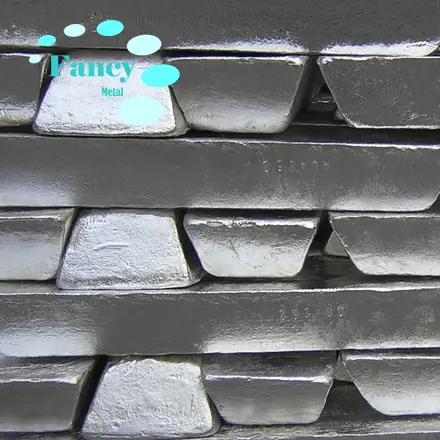Fancymetal offers high purity (customizable) metal products, as well as oxides, product shapes, foils, plates, wires, tubes, rods, powders and a variety of custom shapes.
We also have other tin products:
Tin metal
Tin particles
Tin oxide
Physical properties:
Tin foil is a silvery white metal. The surface of the tin ingot forms a pearly oxide film due to oxidation. Its surface gloss is closely related to the impurity content and casting temperature. The lower the casting temperature, the darker the surface color of the tin. When the casting temperature is higher than 500℃, the surface of the tin is easily oxidized to form a film with a pearly color. Small amounts of impurities in tin, such as lead, arsenic, and antimony, can change the surface crystal shape of tin and darken its surface color.
Preparation method:
Electrolysis: The diaphragm liquid making device generally uses special No. 1 tin or No. 1 tin as raw material to produce high-purity tin. Use special No. 1 tin to cast an anode, use pure H₂SO₄ to electrochemically dissolve to produce stannous sulfate solution, and then mix it into an electrolyte with the required components for electrolysis to obtain high-purity tin.
The electrolysis-vacuum volatilization method consists of two processes: electrolytic refining and vacuum volatilization to remove lead. No. 1 tin or special No. 1 tin is used as raw material. Cathode tin is obtained through electrolysis. It is required that 12 elements such as Fe, Ni, Cu, Co, Ag, In, Al, Ga, Mn, Au, Ti, T1 are not greater than 0.5x10⁻⁴%, and the sum of various impurities is less than 5x10⁻⁴%. Then the product is vacuum volatilized to remove lead and other impurities that can still be removed in vacuum volatilization, such as As and Bi, to achieve qualified products.
Applications:
✔Tin chemical products have a wide range of industrial uses, the most important of which is to be used for plating tin and its alloys on metal surfaces for protection or decoration. It is also widely used in pharmaceuticals, plastics, ceramics, wood preservatives, photography, antifouling agents, coatings, catalysts, agricultural chemicals, flame retardants and plastic stabilizers.
✔Tin foil production
✔Glass industry
✔Tin-lead solder
✔Bearing alloy
✔Medical use, tin is used in the manufacture of some medical devices, such as tin drums, and resonance membranes for stethoscopes.
Advantages:
✔ Strict quality control of raw materials, process control and pre-delivery processes.
✔ Strong technical capability makes it a reliable long-term supplier.
✔ Technical support: 24 hours technical support by email or phone.
History:
In ancient times, people discovered and used tin. In some ancient tombs in China, some tinware such as tin pots and tin candlesticks were often excavated. In the Zhou Dynasty, the use of tinware was very common. In the ancient tombs of Egypt, tin daily necessities were also found.
At the beginning of the 20th century, with the continuous development of the tin industry, tin gradually became an indispensable key rare metal in modern industry. It is mainly used in the production of tinplate, electroplating, corrosion resistance, welding, materials, tin chemical products and other metallurgical uses of tin. It is widely used in cutting-edge scientific and technological fields such as electronics, information, electrical appliances, chemicals, metallurgy, building materials, machinery, food packaging, aerospace, ships, fuel, atomic energy and spacecraft.

